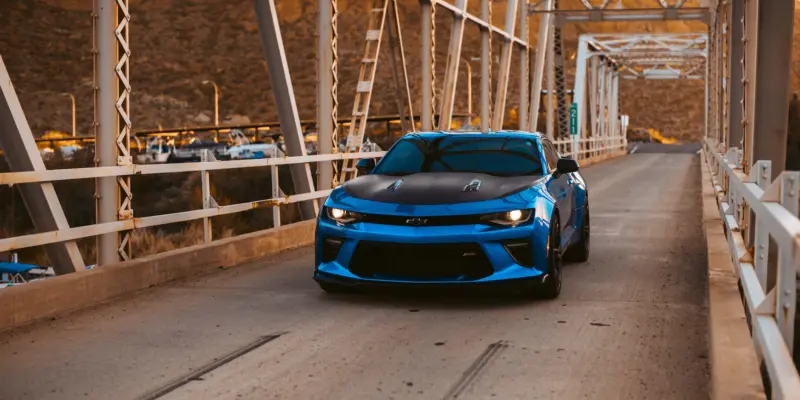
In the automotive world, concept cars are the creative playgrounds where designers and engineers experiment with futuristic aesthetics and cutting-edge technologies. These vehicles often debut with much fanfare at auto shows, promising a glimpse into the potential future of transportation. They represent the distilled essence of imagination, pushing boundaries that production models, constrained by practicality and cost, simply cannot. For a fleeting moment, they steal the spotlight, showcasing wild shapes, vivid colors, and genuinely audacious ideas.
While many concept cars never make it to production, their bold ideas and innovative features can leave an indelible mark on the industry, influencing everything from design cues to technological integrations in production models. They are the avant-garde experiments that, despite their fleeting presence, subtly guide the evolution of automotive thought. They challenge conventions, redefine luxury, and frequently introduce safety features or performance benchmarks that seem like science fiction at their inception.
Indeed, the legacy of these forgotten concept cars is profound, shaping the modern automotive landscape in ways that are often uncredited yet deeply felt. From radical body shapes to advanced propulsion systems, these visionary designs have set the stage for many elements we now see in everyday vehicles. As we embark on this journey through some of the most influential concepts, we uncover the intricate threads that connect past imaginations to current automotive realities, highlighting how these avant-garde creations have guided the evolution of car design and functionality, cementing their place as true inspirations for next-generation designs.

1. **Buick Y-Job (1938)**Harley Earl’s masterpiece from 1938 wasn’t just a car – it was a revolution on wheels. The sleek convertible introduced features like “hidden headlights, electric windows, and flush door handles” at a time when most automobiles still adhered to boxier, more utilitarian aesthetics. This pioneering spirit made the Y-Job a true benchmark, defining what a concept car could be: a rolling laboratory of future possibilities rather than just a styling exercise.
General Motors famously used this beauty as a daily driver for years after its debut, a testament to its functional prowess and ahead-of-its-time engineering. This real-world application proved that such advanced concepts could actually function in the real world, transcending the static display to inform practical automotive development. It was an early validation that visionary design could indeed translate into tangible, usable innovations for the consumer.
The Y-Job’s influence echoed through Buick’s design language for decades, making it unequivocally “the grandfather of all American concept cars.” Its focus on integrating new technologies into a cohesive design package has guided the development of luxury car features, emphasizing innovation as a cornerstone of automotive luxury. Earl’s vision laid the groundwork for future integration of convenience and stylistic elements that would eventually become industry standards.
More broadly, the Y-Job established a paradigm for how automakers could use concept vehicles to gauge public reaction to radical ideas and test novel technologies. It demonstrated that a car could be more than just transportation; it could be a statement, a prediction, and a direct influence on the future trajectory of an entire industry. Its subtle yet profound impact continues to resonate through the annals of automotive history.
Read more about: 16 Wild Concept Cars You’ll Never Get To Drive
2. **Ford Nucleon (1958)**Imagine a world where “radiation on the road?” In 1958, Ford’s atomic-powered Nucleon concept proposed replacing gasoline with a miniature nuclear reactor in the trunk. This audacious vision emerged from a post-war era brimming with optimism about nuclear energy’s peaceful applications, offering a glimpse into a future where refueling might be a thing of the past and range limitless. It was a bold, if ultimately unfeasible, leap into uncharted energy territory.
Engineers genuinely believed that nuclear energy would soon power everything “from homes to vehicles.” The car’s distinctive “submarine-inspired rear housed a hypothetical reactor that would need refueling only once every 5,000 miles,” promising unparalleled convenience and freedom from conventional fuel stations. This concept exemplified the era’s fascination with nuclear power as the ultimate solution for energy independence and efficiency, reflecting a widespread belief in its transformative potential.
Thankfully, this radioactive road warrior “never made it past the scale model stage,” sparing the world from potential “fender bender insurance claims” of an entirely new magnitude. While the Nucleon never saw production, its very existence as a concept underscored a persistent ambition within the automotive industry: to dramatically rethink the fundamental power source of vehicles. Its spirit of radical energy solutions, though manifested in an impractical form, highlighted a continuous drive for innovative propulsion systems that resonates even today with the push for electric and hydrogen power.
Read more about: Dream Machines That Never Drove Off the Drawing Board: Iconic Concept Cars That Missed Production
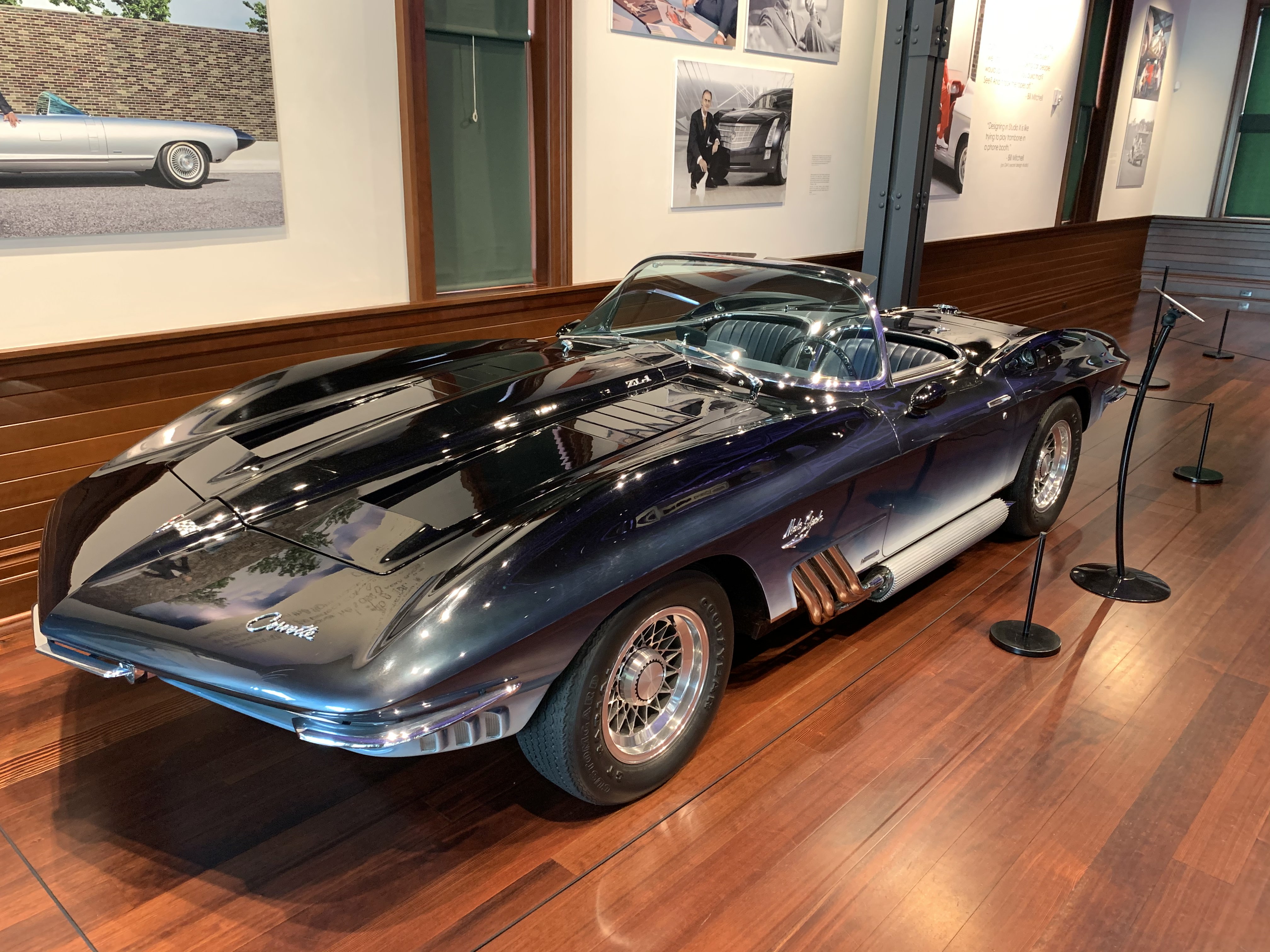
3. **Chevrolet XP-755 Mako Shark (1961)**Legend has it that Bill Mitchell, GM’s design chief, caught a mako shark while fishing and became “obsessed with recreating its colors and predatory shape.” This intense dedication to a singular, organic inspiration birthed the Chevrolet XP-755 Mako Shark, an aggressive beauty that would directly inform one of Chevrolet’s most iconic sports cars. The Mako Shark was not merely a car; it was a testament to how natural forms could be translated into captivating automotive aesthetics, imbued with a sense of speed and power.
The story continues with the car’s distinctive blue-to-white gradient paint scheme. The painters struggled to match the real shark’s hues “until they allegedly snuck into Mitchell’s office and painted his prized mounted shark to match the car!” This anecdote, whether fact or folklore, perfectly illustrates the painstaking effort and creative liberties taken to achieve Mitchell’s vision. The resulting vehicle, unveiled in 1961, was a visual stunner.
Its design “directly influenced the iconic 1963 Corvette Sting Ray,” an undeniable testament to its impact. When one looks at the Mako Shark’s “gill-like side vents and pointed nose,” the “pure underwater inspiration” is immediately apparent, showcasing how a distinct natural form could lend itself to a vehicle’s character. The concept’s sleek, aerodynamic profile and aggressive stance established a new visual language for performance cars, blending aesthetic appeal with the perception of raw speed.
The Mako Shark proved that concepts could serve as direct prototypes for production models, with minimal modifications needed to transition from show car to showroom. Its enduring appeal lies not just in its beauty but in its clear lineage to a beloved classic, demonstrating how inspiration, however unconventional, can lead to timeless design.

4. **Dodge Firearrow IV (1954)**Virgil Exner’s stunning 1954 creation, the Dodge Firearrow IV, came tantalizingly close to production, showcasing the transformative power of a design philosophy. As the “fourth and final iteration of the Firearrow series,” this red beauty represented Chrysler’s pioneering “Forward Look” design philosophy, characterized by “clean lines and European flair.” It marked a departure from the bulkier designs of its predecessors, embracing a sleek elegance that resonated with a changing automotive landscape.
So smitten was wealthy enthusiast Eugene Casaroll that “he bought the rights and produced a slightly modified version called the Dual-Ghia.” This unique turn of events highlighted the Firearrow IV’s compelling design, proving its commercial viability even outside the direct Dodge brand. It was a rare instance of a concept car finding a second life, albeit in limited numbers, due to its sheer aesthetic appeal and engineering promise.
Only “117 of these transformed Firearrows were built, becoming favorites of Frank Sinatra and the Rat Pack.” The celebrity endorsement further cemented its status as a vehicle of exceptional style and exclusivity. The Firearrow IV’s journey from concept to a bespoke, luxury production car underscores its significant influence on automotive design, demonstrating that a well-conceived concept could inspire niche luxury vehicles, even if the parent company didn’t bring it to mass market.
Its elegant proportions and sophisticated detailing set a high bar for luxury and performance, illustrating how a concept could not only predict future trends but also directly enable small-scale, high-end production. The Firearrow IV stands as a monument to how close a visionary concept can come to widespread reality, leaving an indelible mark on design principles.

5. **Pontiac Banshee (1964)**Poor John DeLorean (yes, that DeLorean) created something almost too good in 1964 with the Pontiac Banshee. His sleek two-seater Banshee was envisioned to be “lighter, potentially faster, and would have been cheaper than the Corvette – GM’s golden child.” This bold proposition immediately put it on a collision course with corporate politics, highlighting the internal struggles that often shape which concepts make it to market and which remain relegated to history.
Indeed, “corporate politics sealed its fate.” Executives, fearing it “would cannibalize Corvette sales,” ordered all prototypes destroyed. This decision, though frustrating for enthusiasts and designers alike, speaks volumes about the perceived threat the Banshee posed to an established and profitable line. It was a testament to the Banshee’s inherent superiority in design and performance that it was seen as such a direct competitor to GM’s flagship sports car.
Miraculously, two survived – “a white coupe and a silver convertible” – allowing automotive historians to appreciate its groundbreaking design. The Banshee’s DNA, however, truly lived on, “influencing both the ’68 Corvette and third-generation Firebird.” This illustrates a common fate for many concepts: even if the car itself is suppressed, its innovative design elements and engineering principles often find their way into subsequent production models, albeit in a modified form. The Banshee, therefore, stands as a prime example of an internal competition shaping and refining future vehicle aesthetics.
Read more about: Lost Wonders of the Chrome Age: 14 Vanished ’60s Concept Cars That Defined Automotive Dreams

6. **Oldsmobile Golden Rocket (1956)**”Blast off!” The 1956 Oldsmobile Golden Rocket debuted before Sputnik even launched, yet it looked entirely “ready for interplanetary travel.” This concept embodied the optimistic space-age aesthetic of the mid-1950s, a time when visions of futuristic travel permeated popular culture. Its “gold-colored, missile-shaped body featured a bubble cockpit and dramatic fins that screamed ‘cosmic cruiser’,” creating a truly unforgettable visual spectacle that captured the imagination.
This vehicle was remarkably ahead of its time, incorporating innovative features designed for both luxury and convenience. For instance, “the seats would automatically swivel outward when the doors opened,” facilitating elegant entry and exit – a feature that wouldn’t become common for decades. Furthermore, “the dashboard moved with the steering wheel to maintain perfect visibility of the gauges,” demonstrating an early consideration for ergonomic design and driver comfort that was truly visionary.
Though it never reached production, the Golden Rocket’s astronomical styling “influenced Oldsmobile’s late-50s models,” particularly in their distinctive fin designs and overall futuristic aspirations. It showcased how concept cars could serve as powerful statements about a brand’s vision and technological prowess, even if their most extreme features were impractical for mass production. The Golden Rocket remains a bold statement about future mobility, blending fantasy with nascent automotive technology.
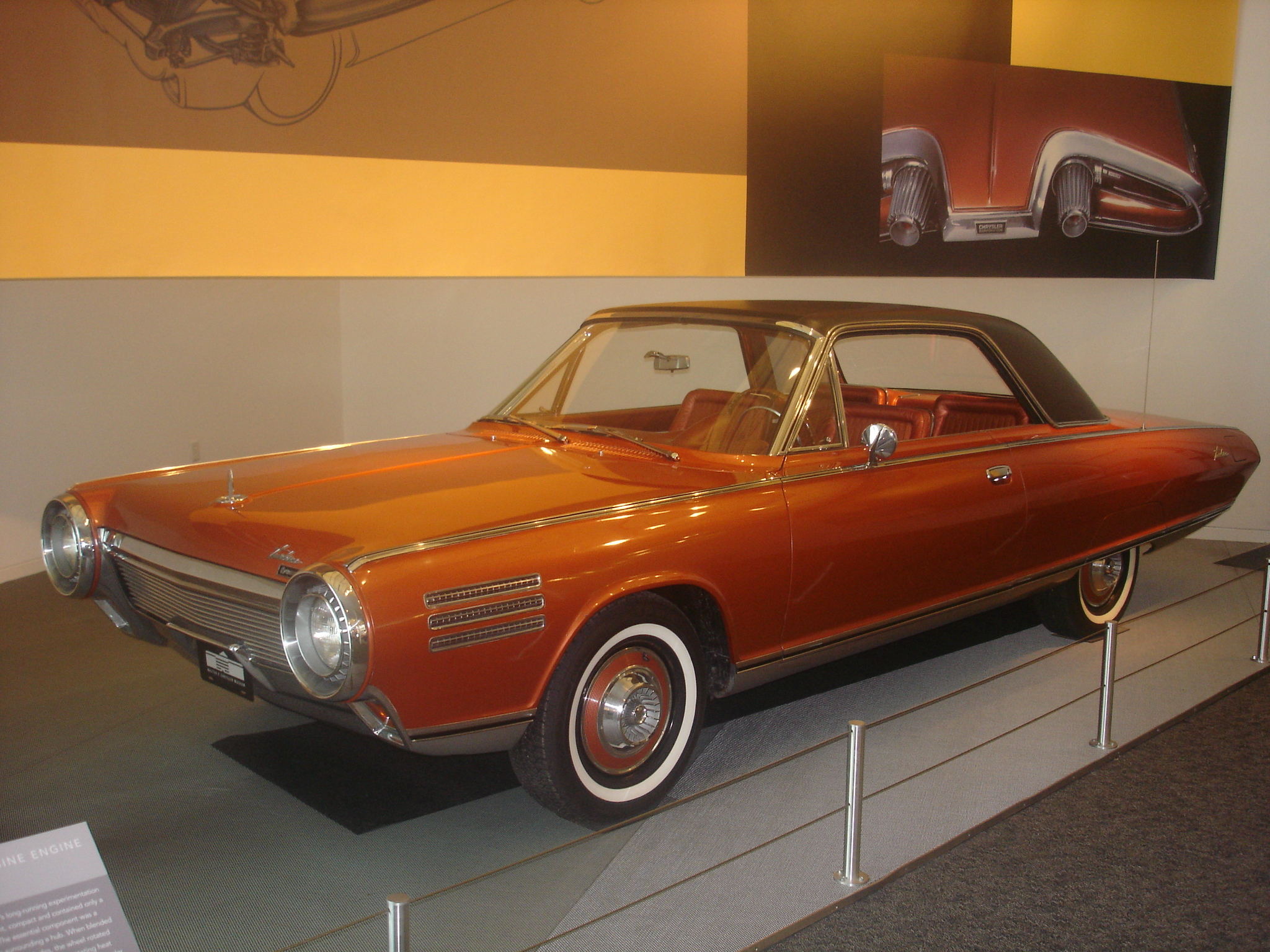
7. **Chrysler Turbine Car (1963)**Imagine a car that could run on practically anything – “tequila, perfume, or peanut oil!” Chrysler’s copper-colored marvel from 1963 packed a jet turbine engine that could burn virtually any flammable liquid. This groundbreaking experiment pushed the boundaries of conventional automotive power, offering a glimpse into a future unconstrained by traditional fossil fuels. It was an ambitious undertaking that challenged the very definition of a car’s propulsion system.
The distinctive whooshing sound of the turbine engine earned it the affectionate nickname “the flying living room.” In an unprecedented move, “fifty cars were built and loaned to everyday families for real-world testing.” This bold public trial demonstrated Chrysler’s serious commitment to the technology, gathering invaluable feedback on its viability and user experience. It was a remarkable exercise in public engagement, allowing ordinary citizens to directly participate in automotive innovation.
While “most were destroyed afterward, with only nine surviving today,” the program ultimately “failed because of poor fuel economy and high manufacturing costs.” Despite these setbacks, it “remained one of the boldest automotive experiments ever.” The Chrysler Turbine Car’s innovative approach to fuel diversity and its pioneering use of an unconventional engine type cemented its place in history, showcasing a fearless pursuit of alternative power sources that continues to inspire engineers today, particularly in the quest for sustainable automotive solutions.
Its brief but impactful run highlighted the immense challenges and rewards of pushing technological envelopes, leaving a lasting legacy as a testament to American automotive ingenuity and a daring vision of the future.
Building on our exploration of early automotive visionaries, we now propel ourselves into further realms of concept car brilliance, where imagination knew no bounds and experimental spirit redefined what a vehicle could be. These machines, often relegated to the history books, were not mere flights of fancy; they were crucial stepping stones, pushing the boundaries of technology, design, and driver experience. They challenged conventional wisdom and, in doing so, laid foundational elements for some of the most enduring innovations and styling cues we recognize in today’s vehicles. This journey through forgotten concepts reveals the intricate threads connecting past imaginations to current automotive realities, cementing their place as true inspirations for next-generation designs.
Read more about: Dream Machines That Never Drove Off the Drawing Board: Iconic Concept Cars That Missed Production

8. **Ford Indigo (1996)**Emerging from the mid-nineties, a period ripe for technological advancement, the Ford Indigo was a striking declaration of intent, merging road car aspirations with pure Formula One DNA. Developed in close collaboration with the renowned Reynard racing team, this concept was far more than just a styling exercise. It packed a “screaming V12 engine mounted behind the cockpit like a proper race car,” showcasing a direct lineage from the track to the road.
Its design was a radical departure, featuring an “open-wheel design and central driving position” that blurred the lines between a street-legal vehicle and a high-performance racing machine. This bold aesthetic was not just for show; it underscored the Indigo’s commitment to delivering an unadulterated driving experience, prioritizing performance and driver engagement above all else. It signaled a growing trend towards hyper-performance vehicles that drew heavily from motorsport engineering.
Ford’s dedication to this concept was significant, as they “actually built two – a non-running show car and a fully functional prototype that could hit 170 mph.” This commitment to a working model solidified the Indigo’s credentials, demonstrating that its radical vision was mechanically sound and capable of real-world performance. Its subsequent appearances in “several racing games, including Ford Racing,” cemented its place in popular culture, allowing a generation of enthusiasts to experience its virtual thrill.
The Ford Indigo’s legacy is less about direct production and more about its symbolic power. It represented a pinnacle of collaborative engineering between road car divisions and racing specialists, influencing the design ethos of future performance vehicles within Ford and beyond. It pushed the idea that production cars could incorporate extreme racing technologies, ultimately contributing to the development of high-performance vehicles that offer both exhilarating speed and sophisticated handling.
Read more about: Remember These? 13 Wild ’90s Concept Cars Only True Auto Experts Could Recall!

9. **Cadillac Sixteen (2003)**In the opulent world of luxury concepts, the Cadillac Sixteen stood as a monument to sheer automotive extravagance and ambition when it debuted in 2003. This jaw-dropping super-luxury concept resurrected the legendary “Sixteen” name, an homage to Cadillac’s ultra-premium multi-cylinder engines of the past, with an appropriately colossal 13.6-liter V16 engine that boasted an astounding “1,000 horsepower.” It was a powerful statement that Cadillac intended to reclaim its position at the apex of luxury and performance.
The interior of this modern land yacht was a masterclass in artisanal craftsmanship and high-end detailing. It featured a “handcrafted interior [with] Bulgari instruments and more wood than a forest,” creating an environment of unparalleled sophistication and comfort. Every element, from the lavish materials to the meticulously designed dashboard, spoke to an uncompromising vision of luxury that prioritized experiential richness and timeless elegance.
Beyond its immense power and luxurious appointments, the Cadillac Sixteen showcased innovative engineering for efficiency, despite its gargantuan engine. This nearly “19 feet long” vehicle possessed the surprising ability to “deactivate cylinders to run on just four, eight, or all sixteen depending on power needs.” This early form of cylinder deactivation technology, while perhaps audacious for a V16, highlighted a forward-thinking approach to balancing performance with a degree of fuel consciousness.
While the Sixteen proved “too outrageous for production,” its “bold design language shaped Cadillacs for the next decade.” Elements of its aggressive grille, sharp creases, and overall commanding presence found their way into production models, helping to redefine Cadillac’s aesthetic identity for the 21st century. It underscored the concept car’s role as a design beacon, influencing an entire brand’s visual trajectory and reaffirming its aspiration to compete with the world’s most prestigious luxury marques.
Read more about: Dream Machines That Never Drove Off the Drawing Board: Iconic Concept Cars That Missed Production

10. **Plymouth XNR (1960)**If ever a concept car embodied the eccentric genius of its creator, it was the Plymouth XNR from 1960, Virgil Exner’s “personal playground of weird.” This roadster was a radical departure from conventional automotive design, challenging notions of symmetry and passenger interaction with its utterly unique asymmetrical layout. It was a bold artistic statement, crafted to push aesthetic boundaries in an era often defined by more conventional forms.
The XNR’s most distinctive feature was its driver-focused, asymmetrical design, which included “a dramatic fin” on the driver’s side, while the passenger side “remained flat.” This daring stylistic choice not only gave the car an unmistakable silhouette but also amplified the sense of speed and dynamism, as if the car itself was leaning into a turn even while stationary. It was a futuristic vision that prioritized the driver experience above all else, creating a truly personal cockpit.
Beneath its avant-garde exterior, the XNR was built “on a modified Valiant chassis” and housed a “slant-six engine pumped up to 250 horsepower.” This fusion of experimental design with a robust, though modified, production platform demonstrated a practical approach to concept creation. It proved that cutting-edge aesthetics could be combined with functional, performance-oriented engineering, even if the result was visually unconventional.
The XNR’s journey after its show circuit debut adds another layer to its legendary status. It was “sold to the Shah of Iran, then smuggled out during the revolution, and eventually restored to its original glory.” This dramatic history underscores its allure and importance, showcasing how a concept car could become a prized collectible and a piece of cultural history. Its distinctiveness and compelling narrative cemented its place as a truly unforgettable design icon, demonstrating how individual design visions can transcend conventional boundaries and even geopolitical events.
Read more about: Lost Wonders of the Chrome Age: 14 Vanished ’60s Concept Cars That Defined Automotive Dreams

11. **GM Firebird III (1958)**In an era captivated by the space race and jet propulsion, the 1958 GM Firebird III emerged as a literal vision of the future, embodying the wildest dreams of automotive designers. This astonishing concept entirely rethought the driver-car interface, daring to replace the familiar steering wheel with a revolutionary “joystick called the ‘Unicontrol’ that handled steering, acceleration, and braking with one hand.” It was a profound experiment in ergonomic innovation, aiming for ultimate intuitive control.
Its aesthetic was overtly aerospace-inspired, featuring a distinct “bubble canopy and seven fins” that made it look “more like a fighter jet than a family car.” This dramatic styling wasn’t just decorative; it was a bold statement about speed, aerodynamics, and the boundless possibilities of future transportation. The Firebird III projected an image of effortless, almost airborne, mobility, capturing the optimism of a society on the cusp of space exploration.
Powered by a gas turbine engine, this “space-age oddity” was packed with features that were decades ahead of their time, including “air conditioning, cruise control, and anti-lock brakes” – technologies that would only become common much later. Perhaps most remarkably, it boasted an “ultrasonic key system [that] could automatically open doors as the driver approached – pure science fiction in the Eisenhower era!” These innovations highlighted GM’s commitment to pushing technological envelopes across multiple fronts, from propulsion to luxury and convenience.
While the Firebird III never made it to production in its extreme form, its audacious design and technological foresight had a ripple effect. It served as a powerful illustration of what was possible, spurring imagination and signaling future directions for automotive engineering and driver-centric technologies. This visionary concept exemplified how experimental vehicles could function as incubators for ideas, even if the direct application was years, or even decades, away from widespread adoption.
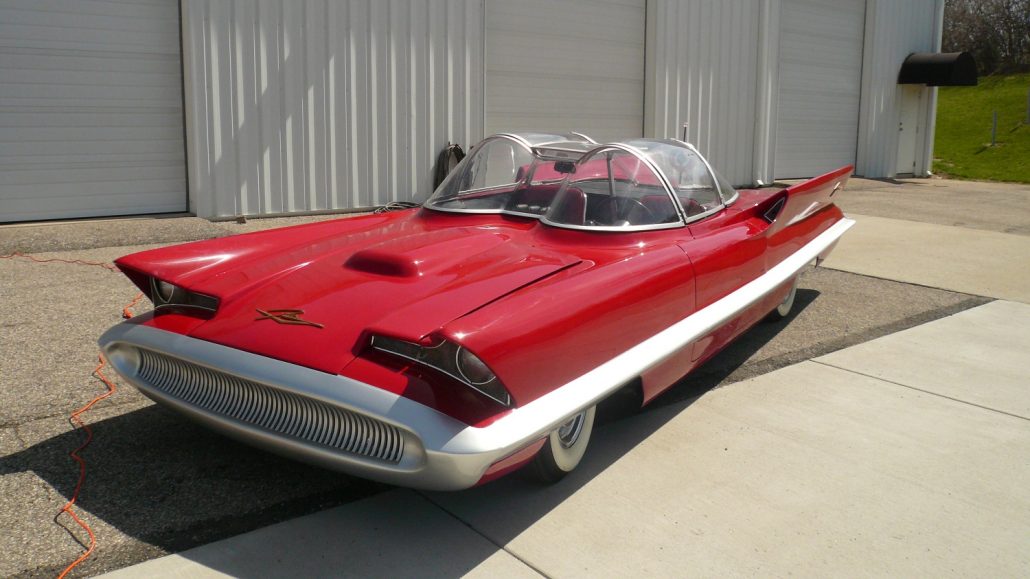
12. **Lincoln Futura (1955)**Before it became one of the most recognizable vehicles in pop culture history, the Lincoln Futura first captivated audiences in 1955 as a standalone concept, a shimmering vision of mid-century American automotive aspiration. “Hand-built in Italy for the astronomical sum of $250,000” – an amount exceeding $2.7 million in today’s currency – this pearlescent frost-blue marvel was a testament to the era’s commitment to grand, futuristic design. It was a show car designed to leave an indelible impression.
The Futura’s design was defined by its spectacular proportions and unique features, most notably its “double-bubble canopy and outrageous hooded headlights.” These elements combined to create a truly distinctive silhouette, blending a sense of aerodynamic efficiency with unbridled stylistic flourish. It was a vehicle that looked both forward-thinking and elegantly dramatic, capturing the optimistic spirit of post-war American design.
After its initial, glamorous career on the auto show circuit, the Futura found an unexpected second life that would etch it into global consciousness. Customizer George Barris, with a stroke of genius, “bought it for $1 and transformed it into the iconic 1966 Batmobile in just three weeks.” This incredible metamorphosis showcased the adaptability of visionary design, demonstrating how a concept could transcend its original purpose to become a cultural icon.
The story of the Lincoln Futura is a powerful narrative of enduring influence. Its transformation into the Batmobile provided an “incredible return on investment,” with the finished vehicle later “sold at auction for $4.62 million!” This extraordinary journey from a costly, avant-garde concept to a beloved symbol of justice highlights how deeply innovative design can embed itself in collective memory, proving that some concepts achieve immortality not through production, but through pure, unforgettable presence.
Read more about: The Golden Age of Chrome and Power: 15 Iconic American Cars That Defined the 1950s
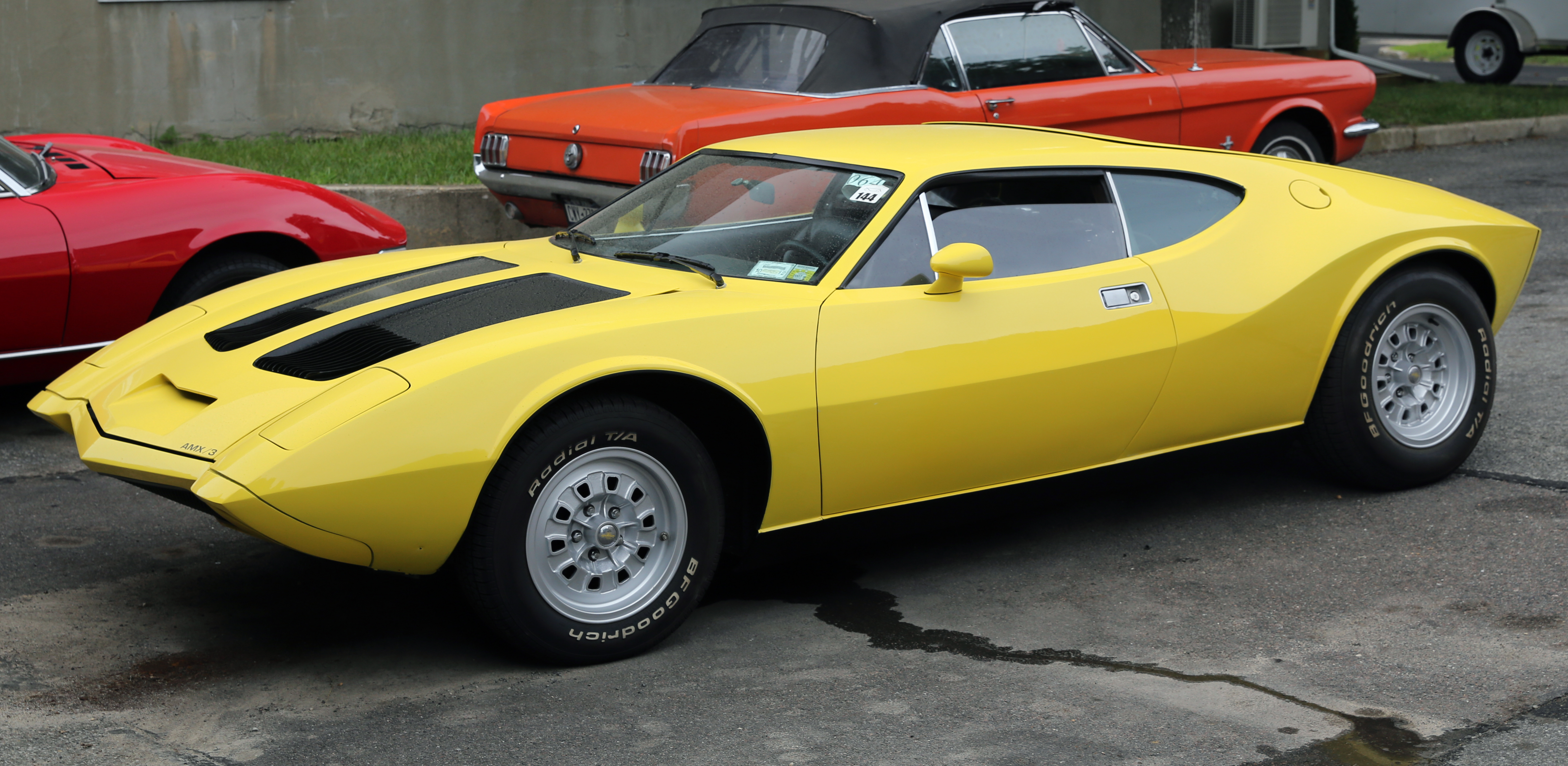
13. **AMC AMX/3 (1970)**In a surprising move for an American manufacturer, American Motors Corporation (AMC) unveiled the AMX/3 in 1970, an Italian-American stunner that boldly challenged the dominance of European exotics. This mid-engined masterpiece was a testament to international collaboration, “developed with help from Giotto Bizzarrini (who worked on the Ferrari 250 GTO),” imbuing it with a genuine supercar pedigree and a performance-oriented soul.
The AMX/3 was no mere beauty queen; it was engineered for serious performance. It “could hit 170 mph and tackle corners like European exotics costing twice as much,” signaling AMC’s ambition to compete at the very top tier of the automotive world. This aggressive performance profile, combined with its sleek European-inspired lines, made it a formidable contender, even outperforming “the benchmark De Tomaso Pantera in testing!”
Tragically, despite its promising capabilities and ambitious plans to “build 5,000 per year,” the project was ultimately undone by a confluence of “financial troubles and new safety regulations.” Only “six prototypes were completed before cancellation,” a poignant reminder of how external factors can halt even the most brilliant automotive innovations. It stands as a “what if” moment in automotive history, a glimpse of American muscle combined with European finesse that never quite fully materialized.
Yet, the AMX/3’s brief but impactful existence showcased AMC’s engineering prowess and willingness to venture into uncharted territory. Its advanced mid-engine layout, high-performance credentials, and sophisticated design contributed to the ongoing evolution of sports car architecture, proving that innovative design can emerge from unexpected sources. It remains a celebrated example of a concept that, even in its limited form, hinted at a significant shift in American automotive manufacturing capabilities and aspirations.
Read more about: Recall These? The Ultimate Showdown: 12 Coupes That Went From Hot to Humiliating in the Great American vs. European Car Wars

14. **Chevrolet Astro II (1968)**Long before the C8 Corvette finally brought the mid-engine layout to mass production, Chevrolet was already envisioning the future with the stunning Astro II concept in 1968. This sleek machine represented a profound shift in thinking for the iconic American sports car, exploring the radical idea of “putting the engine behind the driver,” a configuration long associated with European high-performance vehicles.
The Astro II’s design was aggressively low-slung, “standing just 35.5 inches tall – shorter than your average 4-year-old,” which gave it an immediate, undeniable presence. It looked “ready to race at Le Mans straight from the show floor,” projecting an image of pure, unadulterated speed and aerodynamic efficiency. This extreme profile was a direct consequence of its innovative engineering choices.
To achieve its ultra-low height, “engineers mounted a 427 cubic inch V8 backward,” a clever solution that demonstrated Chevrolet’s ingenuity in packaging powerful components within a constrained design. Furthermore, “the gearbox sat ahead of the rear axle for perfect weight distribution,” highlighting a sophisticated understanding of handling dynamics and performance optimization. These engineering feats were crucial for realizing the mid-engine dream.
Though the Astro II “never reached production,” it was an undeniable precursor, marking the definitive beginning of “Chevy’s 50-year journey toward the mid-engine Corvette.” It wasn’t just a concept; it was a foundational study, providing invaluable insights and proving the viability of a mid-engine layout for a quintessential American sports car. Its legacy lives on in every subsequent iteration of the Corvette, proving the long-term impact of experimental design on mainstream automotive evolution.
Read more about: The Malaise-Era Missteps: Unearthing the Worst Classic Car Accessories of the 1970s
As we conclude our journey through these magnificent, often forgotten concept cars, it becomes clear that their impact extends far beyond the fleeting moments they spent under the auto show lights. These vehicles, from the radical Y-Job to the sleek Astro II, were the prophets of propulsion and design, whispering secrets of the future into the ears of engineers and designers for generations to come. They taught us that the true value of imagination isn’t just in what is built, but in the boundaries it dares to redraw, shaping the very roads we drive on and the cars we dream of, one visionary idea at a time. Their spirit of innovation continues to fuel the automotive industry, reminding us that the greatest designs often begin with a spark of forgotten genius.

